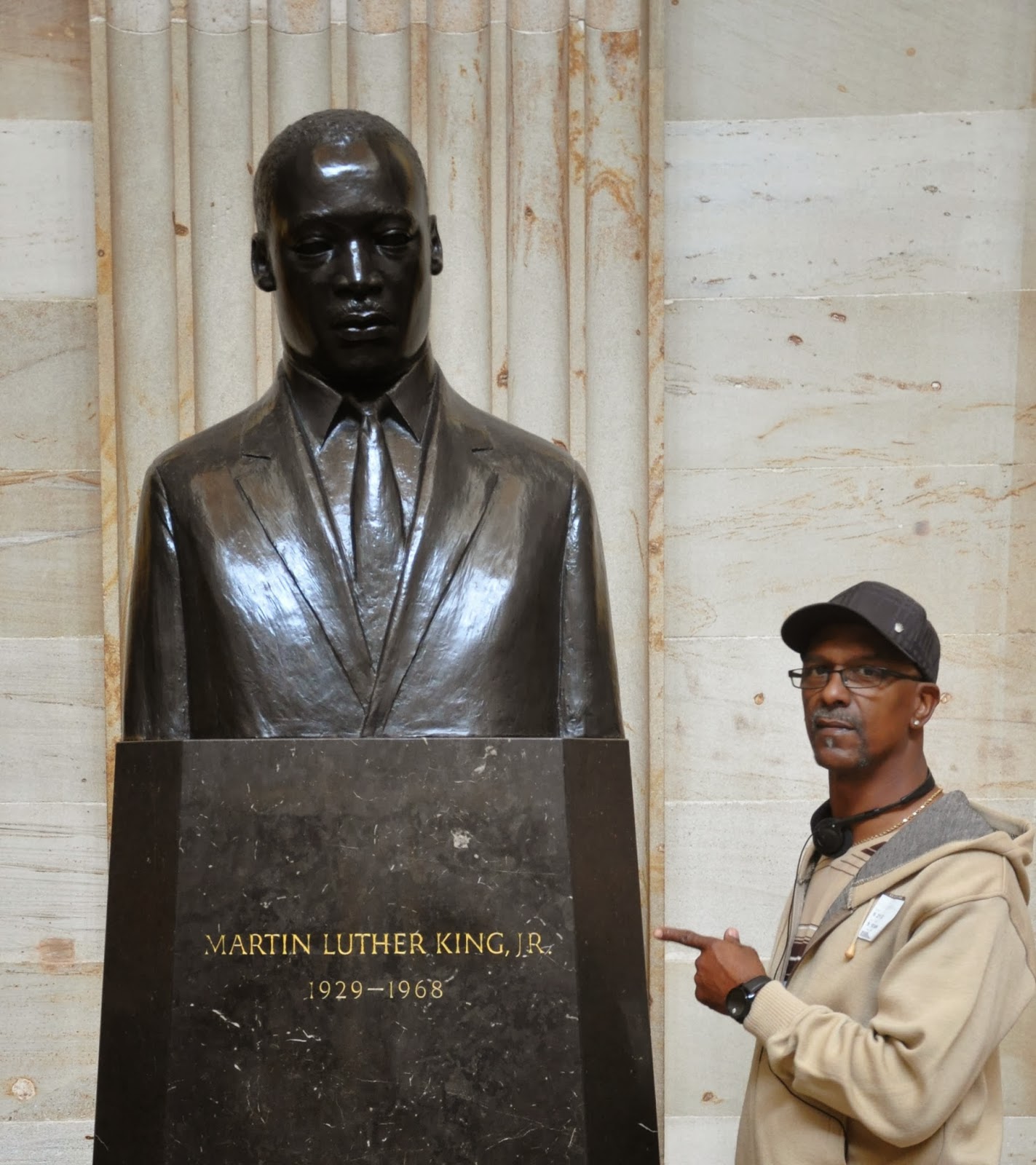Of course there are other works of art in the U.S. Capitol building besides the dome fresco The Apotheosis of Washington and the Frieze of American History that I wrote about in a previous post.
Around the perimeter of the Capitol rotunda are eight large (12 feet by 18 feet) historical paintings:
Below, to the left is Declaration of Independence, one of four paintings by John Trumbull under his 1817 commission from the U.S. Congress. This painting depicts the moment on June 28, 1776, when Thomas Jefferson, in the center, places the Declaration of Independence in front of John Hancock, president of the Second Continental Congress.
The painting on the right is Surrender of General Burgoyne also painted by Trumbull in 1821. The painting shows the surrender of British General John Burgoyne at Saratoga, New York on October 17, 1777, which was a turning point in the American Revolution, and it was the deciding factor in bringing active French support to the American cause. .
The painting above is General George Washington Resigning His Commission, painted by Trumbull between 1822 and 1824. This painting depicts the scene on December 23, 1783, when George Washington resigned his commission as commander-in-chief of the Continental Army. The action was significant for establishing civilian authority over the military, a fundamental principle of American democracy. The statue in front is of the 20th U.S. President James G
There is a lot of significant art in the photo below:
To the left is Embarkation of the Pilgrims, painted by Robert W. Weir in 1843. This painting depicts the Pilgrims on the deck of the ship Speedwell on July 22, 1620, before they departed for North America, where they sought religious freedom. The painting on the right is Baptism of Pocahontas, painted in 1839 by John Gadsby Chapman. The painting depicts the ceremony in which Pocahontas was baptized and given the name Rebecca in an Anglican church.
Around the perimeter of the Capitol rotunda are eight large (12 feet by 18 feet) historical paintings:
Below, to the left is Declaration of Independence, one of four paintings by John Trumbull under his 1817 commission from the U.S. Congress. This painting depicts the moment on June 28, 1776, when Thomas Jefferson, in the center, places the Declaration of Independence in front of John Hancock, president of the Second Continental Congress.
The painting on the right is Surrender of General Burgoyne also painted by Trumbull in 1821. The painting shows the surrender of British General John Burgoyne at Saratoga, New York on October 17, 1777, which was a turning point in the American Revolution, and it was the deciding factor in bringing active French support to the American cause. .
The painting above is General George Washington Resigning His Commission, painted by Trumbull between 1822 and 1824. This painting depicts the scene on December 23, 1783, when George Washington resigned his commission as commander-in-chief of the Continental Army. The action was significant for establishing civilian authority over the military, a fundamental principle of American democracy. The statue in front is of the 20th U.S. President James G
There is a lot of significant art in the photo below:
To the left is Embarkation of the Pilgrims, painted by Robert W. Weir in 1843. This painting depicts the Pilgrims on the deck of the ship Speedwell on July 22, 1620, before they departed for North America, where they sought religious freedom. The painting on the right is Baptism of Pocahontas, painted in 1839 by John Gadsby Chapman. The painting depicts the ceremony in which Pocahontas was baptized and given the name Rebecca in an Anglican church.
Two important sculptures are also in the photo: To the left is a statue of General Dwight Eisenhower, given to the Statuary Hall collection by the State of Kansas. In between the two paintings is a bronze bust of Martin Luther King, Jr., created in 1986 by artist John Wilson.
Another work of art depicting an important member of the Civil Rights Movement is the statue of Rosa Parks. The statue is close to 9 feet tall including its pedestal.
On February 27, 2013, approximately 100 years after her birth, the statue was unveiled in Statuary Hall on February 4, 1913. The bronze statue depicts Parks seated on a rock-like formation of which she seems almost a part, symbolizing her famous refusal to give up her bus seat. The statue shows Parks wearing the exact clothing she wore that day.
Pioneers of the women's suffrage movement, which won women the right to vote in 1920, are beautifully depicted in a group bust sculpture located in the Capitol Rotunda.
Adelaide Johnson carved this sculpture from an 8-ton block of Carrara marble. The monument features portrait busts of three leaders of the woman suffrage movement: Elizabeth Cady Stanton (left), Susan B. Anthony (center) and Lucretia Mott (right). The statue was originally unveiled on February 15, 1921 in the Crypt (located on the first floor of the Capitol, we began our tour in this area). In May 1997, the sculpture was relocated to the Capitol Rotunda.
If you want to read more about the other paintings, sculptures and statues in the Capitol building, visit here.
All photos in this blog post were taken by my husband and me during our visit in September, 2013.






No comments:
Post a Comment